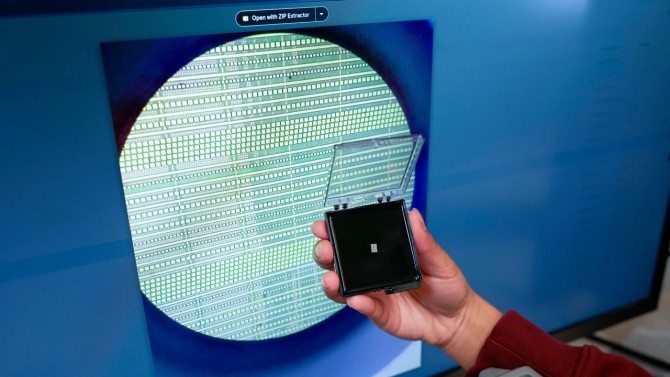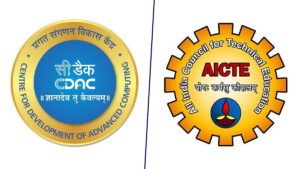Introduction
Traditionally, designing and fabricating microchips is a complex and expensive process. Undergraduates typically don’t get the opportunity to experience the entire process, from design to testing to fabrication. This can lead students to believe chip creation is only possible for large companies like Intel or AMD. However, at Cornell University, a pioneering project team called Cornell Custom Silicon Systems (C2S2) is changing this narrative by enabling undergraduates to dive into the world of microchip design, testing, and fabrication.
Cornell Democratizes Chip Design: C2S2
Leverages the recent boom in open-source hardware tools and services. Similar to how open-source software made software development more accessible, open-source hardware allows students to participate in chip design. C2S2 provides students with the opportunity to:
- Specify the chip’s function.
- Design the chip’s layout.
- Implement the design using open-source tools.
- Test the design in a simulated environment.
- Fabricate the chip through a low-cost service.
- Evaluate the functionality of the final chip.
Follow us on LinkedIn for everything around Semiconductors & AI
Cornell Chip Design: From Concept to Reality
For years, the idea of student-led chip design seemed like a distant dream due to various challenges, including the complexity of commercial design tools, legal agreements with semiconductor foundries, and the high cost of fabrication. However, fueled by the emergence of open-source hardware and a vision to empower undergraduates, C2S2 was born.
Led by Aidan McNay and supported by Professor Christopher Batten, C2S2 embarked on a mission to provide hands-on experiential learning opportunities for students interested in chip design. Through the utilization of open-source technology and collaboration with industry partners like Efabless and SkyWater, the team set out to defy conventional wisdom and prove that undergraduates could indeed tackle the complexities of chip design.
Read More: What Does Mark Zuckerberg Think about AI: 9 Key Takeaways You Should Know – techovedas

Cornell Democratizes Chip Design: A Collaborative Ecosystem
Central to C2S2’s success is its diverse team comprising students from various majors, including electrical and computer engineering, computer science, and applied economics and management. Each member brings unique perspectives and skills to the table, contributing to different facets of the project, from digital and analog design to software development and project management.
The team’s collaborative spirit extends beyond the confines of Cornell, with industry sponsors like AMD and Cadence recognizing the value of their work. Moreover, C2S2’s partnership with the Cornell Lab of Ornithology exemplifies the real-world impact of their endeavors. By designing custom microchips to tag and monitor female corvids, the team is not only advancing scientific research but also showcasing the potential of microchip technology in diverse fields.

Read More: Micron to Build First Latin American Facility in Mexico: Hiring 100+ for Tech Hub – techovedas
Nurturing Tomorrow’s Innovators
Perhaps the most remarkable aspect of C2S2 is its commitment to experiential learning and mentorship. Undergraduates like Abigail Varghese have the opportunity to apply theoretical knowledge gained in classrooms to real-world projects, fostering a deep understanding of chip design principles and practical skills that transcend traditional academic boundaries.
Through a carefully structured curriculum and multi-year project iterations, C2S2 guides students through the entire chip design process, from conceptualization to tape-out and testing. This hands-on approach not only equips undergraduates with technical expertise but also instills invaluable problem-solving, collaboration, and communication skills essential for success in today’s technology-driven world.

Cornell Democratizes Chip Design: The Impact
- C2S2 allows undergraduate engineers to gain valuable hands-on experience in a field previously out of reach.
- This experience can be instrumental in students pursuing careers in chip design or related fields.
- C2S2’s work isn’t just about education. They’ve collaborated with Cornell’s Lab of Ornithology to create a microchip for tagging crows and ravens.
- This chip is lightweight, low-power, and can record bird calls while tracking their movement.
- This data will help researchers understand crow and raven behavior based on their vocalizations.
- C2S2’s project has the potential to be applied to creating microchips for studying other small animals as well.
By making chip design more accessible, C2S2 is fostering a new generation of engineers and potentially creating new tools for scientific research.
Read More: 5 Most Useful and Important High-End Graphics Cards – techovedas
Why is this a big deal?
The Cornell Custom Silicon Systems (C2S2) project is a big deal for a few reasons:
Democratization of Chip Design:
- Traditionally, designing and fabricating microchips has been expensive and required specialized facilities. C2S2 leverages open-source tools and services, making chip design accessible to undergraduate students for the first time. This could inspire a new generation of engineers and entrepreneurs interested in creating custom chips.
Educational Benefits:
- C2S2 provides a unique educational experience for students. They gain hands-on experience in the entire chip creation process, from design concept to testing and fabrication. This exposure is invaluable for students pursuing careers in chip design, embedded systems, or related fields.
Scientific Applications:
- C2S2 isn’t just about education. Their collaboration with the Cornell Lab of Ornithology demonstrates a practical application. The custom microchip for tagging crows and ravens is a prime example.
- This chip is lightweight, low-power, and multifunctional, offering researchers new possibilities for studying animal behavior.
- The potential to apply this technology to other small animals broadens the scientific impact of C2S2’s work.
Open-Source Advancement:
- C2S2’s success highlights the growing importance of open-source hardware tools and services. Their work paves the way for further development and adoption of open-source resources in the chip design field.
In essence, C2S2 is bringing together innovative use of open-source tools, valuable educational experiences, and scientific advancements. This combination makes it a significant project with the potential to shape the future of chip design and research.
The Future of Microchip Design
As C2S2 continues to evolve and expand its impact, it serves as a beacon of innovation and inclusion in the field of microchip design. By democratizing access to chip design tools and fostering a culture of experimentation and exploration, the team is empowering the next generation of engineers, scientists, and innovators to push the boundaries of what’s possible.
In a world where technology plays an increasingly pivotal role, initiatives like C2S2 remind us that the future is not just shaped by industry giants but by passionate individuals driven by curiosity, creativity, and a relentless pursuit of knowledge. As we celebrate the achievements of C2S2, let us also envision a future where every student has the opportunity to turn their ideas into reality and leave an indelible mark on the world of technology.








